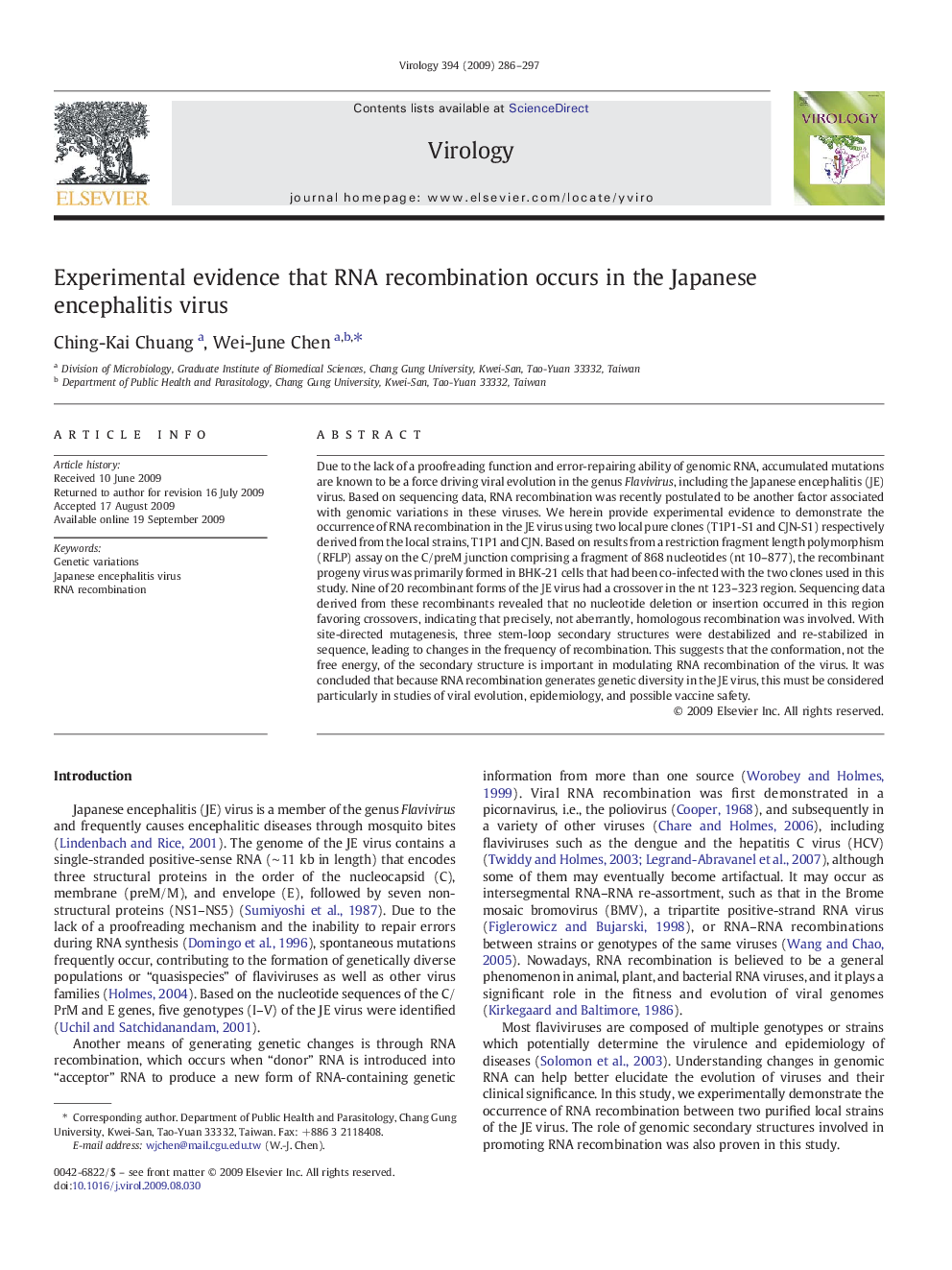| Article ID | Journal | Published Year | Pages | File Type |
|---|---|---|---|---|
| 3424953 | Virology | 2009 | 12 Pages |
Due to the lack of a proofreading function and error-repairing ability of genomic RNA, accumulated mutations are known to be a force driving viral evolution in the genus Flavivirus, including the Japanese encephalitis (JE) virus. Based on sequencing data, RNA recombination was recently postulated to be another factor associated with genomic variations in these viruses. We herein provide experimental evidence to demonstrate the occurrence of RNA recombination in the JE virus using two local pure clones (T1P1-S1 and CJN-S1) respectively derived from the local strains, T1P1 and CJN. Based on results from a restriction fragment length polymorphism (RFLP) assay on the C/preM junction comprising a fragment of 868 nucleotides (nt 10–877), the recombinant progeny virus was primarily formed in BHK-21 cells that had been co-infected with the two clones used in this study. Nine of 20 recombinant forms of the JE virus had a crossover in the nt 123–323 region. Sequencing data derived from these recombinants revealed that no nucleotide deletion or insertion occurred in this region favoring crossovers, indicating that precisely, not aberrantly, homologous recombination was involved. With site-directed mutagenesis, three stem-loop secondary structures were destabilized and re-stabilized in sequence, leading to changes in the frequency of recombination. This suggests that the conformation, not the free energy, of the secondary structure is important in modulating RNA recombination of the virus. It was concluded that because RNA recombination generates genetic diversity in the JE virus, this must be considered particularly in studies of viral evolution, epidemiology, and possible vaccine safety.
